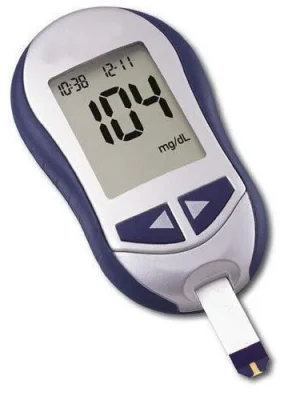Project Report For Glucometers
Introduction
Project Report for Glucometers is as follows.
Glucometers, also known as blood glucose monitoring systems/devices, are diagnostic equipment used to detect the levels of glucose in a patient’s blood in real time. These devices are made up of strips and metres that are used to monitor the glucose levels in the human body.
The strips are dipped in blood and put into the monitoring metre, which displays the blood glucose levels. Glucometers are electronic devices that analyse blood by a pinch of blood drop taken with a related lancing instrument. The metre is portable, battery-powered, and small enough to fit in the palm of your hand.
The amount of glucose in your blood is determined using a glucose metre, often known as a glucometer. It’s a portable medical tool that analyses blood obtained from a fingerstick. The equipment includes a battery-operated digital meter, lancets (tiny needles), a mechanism that changes the depth of the fingerstick based on skin thickness, test strips, control solution and either tracking software or a blood glucose logbook.
The accuracy of a glucometer is crucial for people with diabetes, as they rely on the readings to adjust their insulin dosage or food intake to maintain stable blood sugar levels. Therefore, most glucometers are designed to be highly accurate and are subject to rigorous testing before they are released onto the market.
Glucometers are an essential tool for people with diabetes to manage their condition effectively. Regular monitoring of blood sugar levels can help to prevent complications such as diabetic ketoacidosis, nerve damage, and cardiovascular disease. Therefore, it is important for people with diabetes to choose a reliable and accurate glucometer and to use it as directed by their healthcare provider.

Types Of Glucometers
- Continuous glucose monitoring (CGM) systems :- These devices use a small sensor inserted under the skin to measure glucose levels in the interstitial fluid (fluid between cells) rather than in the blood. CGM systems provide continuous readings of glucose levels and can alert the user to any significant changes in blood sugar levels.
- Self-monitoring of blood glucose (SMBG) systems :- These are the most common type of glucometers and are designed for home use. SMBG systems require the user to prick their finger to obtain a small blood sample, which is then applied to a test strip that is inserted into the meter.
- Non-invasive glucose monitoring systems :- These devices use infrared or ultrasound technology to measure glucose levels without the need for a blood sample. However, these devices are not as accurate as SMBG or CGM systems and are still in development.
Get Completely Custom Bankable Project Report
Market Potential of Glucometers
The glucometer market would grow at a CAGR of 12.12% over the forecast period. This means that the market value of USD 9,327.35 millions in 2021 is going to rise to USD 26,115.97 million by the year 2029.
One of the main factors influencing the market’s expansion is the rise in the number of people with diabetes around the world, and features like the product’s quick and accurate test results are projected to contribute to this growth. The study on the global glucose metre market offers a comprehensive analysis of the industry.
The customer demand for continuous glucose monitoring, which is always changing, is helpful clinically and economically. The needle-free Glucometer’s technology advancements have made it simpler for people all around the world to embrace these devices. One of the features that will fuel the needle-free Glucometer Market’s exponential rise is the non-invasive, painless Glucometer.
Additionally, the benefits of using the device, such as quick and reliable test results, are likely to fuel market expansion. One of the primary factors driving the market growth is the rise in the levels of the diabetic population internationally.

